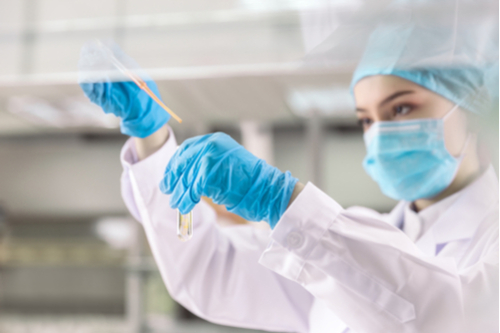Genetic manipulation has an interesting history of self-regulation in the United States (US). In 1953, Watson and Crick formulated the current description of DNA as a double helix1 and soon thereafter experiments with restriction endonucleases gave scientists the ability to modify and manipulate DNA2. It was soon recognized that while this powerful tool could be used for the benefit and advancement of science, unknown risks and hazards also existed. After World War II, experiments with biological agents expanded, and included biological warfare experiments at Fort Detrick3. In the 1950’s this field made a concerted effort to self-regulate in order to protect staff members and the environment, and scientists began using and documenting safer practices. As increasing numbers of scientists began manipulating DNA, concerns about modifying bacterial and viral genes became more widespread since the institutions conducting this research approached biosafety with varying degrees of standard practices and self-regulations. In 1973, an international contingent of biomedical scientists met at the first Asilomar Conference and then at the Gordon Conference on Nucleic Acids later that year. Discussions during these convened meetings about voluntary compliance with agreed-upon terms led to the second Asilomar conference in 1975 and ultimately to the creation of the NIH Guidelines for Research Involving Recombinant DNA Molecules which were published in the Federal Registrar on July 7, 19764, 5.
The NIH Guidelines for Research Involving Recombinant or Synthetic Nucleic Acid Molecules (NIH Guidelines)6 serve as the foundation of biosafety-focused oversight of research involving recombinant or synthetic nucleic acids (rsNA) in the US. They apply to any rsNA research funded by the NIH and for all rsNA research at institutions who accept any NIH funding for this type of research, even if the research is conducted internationally. The NIH Guidelines also establishes the role and responsibilities of the Institutional Biosafety Committee (IBC) in providing local oversight of this research (NIH Guidelines, Section IV-B-2-a). An IBC must be comprised of members who have “expertise in recombinant or synthetic nucleic acid molecule technology and the capability to assess the safety of recombinant or synthetic nucleic acid molecule research and to identify any potential risk to public health or the environment” (NIH Guidelines, Section IV-B-2-a-(1)). The NIH Guidelines also emphasize public transparency and community involvement in IBC reviews, requiring each IBC to include at least two members who reside in the surrounding community and are not affiliated with the institution conducting the research. While the NIH Guidelines stipulate the general composition of an IBC must include local members, it does not establish specific quorum requirements for an IBC meeting. Unlike the Institutional Review Board (IRB) regulations on human subject research, the NIH Guidelines do not support an analogous expedited review process in which certain decisions and approvals can be made outside of a convened meeting. Rather, the intention of an IBC meeting is to deliberate and discuss the research in an open, collaborative environment where local concerns can be addressed and determinations can be made.
WCG administers IBCs on behalf of over 800 institutions in the United States and throughout the world to uphold the tenets of the NIH Guidelines. We strive to work with local community members who are knowledgeable and experts in the fields of biosafety, public health, and/or infection prevention. WCG policy requires at least one local community member be present in order to meet quorum requirements for an IBC meeting. This level of community member involvement allows WCG-administered IBCs to have more robust and meaningful discussions about local biosafety regulations than they otherwise would. WCG encourages study staff members and the Principal Investigator to attend their institution’s IBC meeting(s), which helps ensure that the staff members conducting the research are fully aware of best biosafety practices and determinations made by the IBC. Determinations by a WCG-administered IBC are made by majority rule, rather than consensus. This encourages open discussions and debates, while respecting the opinions of others and allowing all members to vote independently. The NIH recommends that an institution “open its Institutional Biosafety Committee meetings to the public” (NIH Guidelines, Section IV-B-2-a-(7)), and WCG asks institutional staff to post notice of the IBC meeting in a public space to solicit questions from the public. By adhering to these practices, WCG’s philosophy of biosafety review mirrors the open dialog and participation of those who paved the way to ensure research involving rsNA is conducted safely, ethically, and with public transparency in the face of emerging technologies.
References
- Pray, L. (2008) Discovery of DNA structure and function: Watson and Crick. Nature Education 1(1):100
- Wil A. M. Loenen, David T. F. Dryden, Elisabeth A. Raleigh, Geoffrey G. Wilson, Noreen E. Murray, Highlights of the DNA cutters: a short history of the restriction enzymes, Nucleic Acids Research, Volume 42, Issue 1, 1 January 2014, Pages 3–19
- Riedel S. Biological warfare and bioterrorism: a historical review. Proc (Bayl Univ Med Cent). 2004 Oct;17(4):400-6.
- Institute of Medicine. 1991. Biomedical Politics. Washington, DC: The National Academies Press.
- NIH Recombinant DNA Research Guidelines, Federal Registrar, Vol.. 41, No. 131: WEDNESDAY, July 7, 1976
- NIH Guidelines for Research Involving Recombinant or Synthetic Nucleic Acid Molecules (NIH Guidelines), April 2024
Don't trust your study to just anyone.
Partnering with WCG puts it in the best hands. We’ll help you every step of the way, from timeline and enrollment dates to qualification of prospective sites to document preparation and distribution. Experience the WCG difference starting with a free IBC services consultation.
